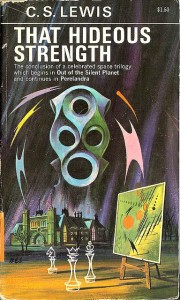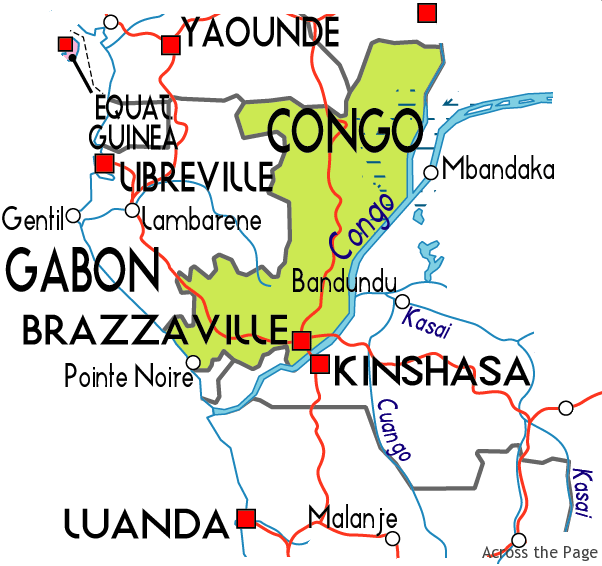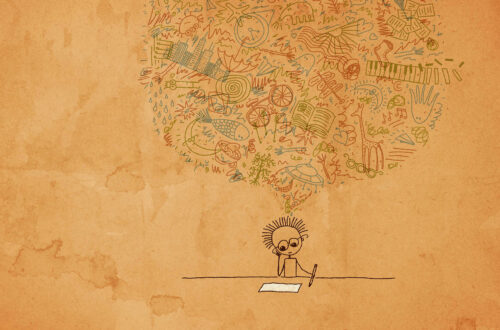That Hideous Strength: Once more into the breach
 This was at least my third reading of C.S. Lewis’s culminating space trilogy novel. I reviewed one reread a few years ago here. What makes this reading unique is that it occurs on the heels of rereading the two preceding novels. I was hoping this would enable me to see more in the book than in previous readings.
This was at least my third reading of C.S. Lewis’s culminating space trilogy novel. I reviewed one reread a few years ago here. What makes this reading unique is that it occurs on the heels of rereading the two preceding novels. I was hoping this would enable me to see more in the book than in previous readings.
And, I suppose, I did see more, as one always does in rereading. Lewis himself was a rereader, as he explains in “On Stories“:
An unliterary man may be defined as one who reads books once only. There is hope for a man who has never read Malory or Boswell or Tristram Shandy or Shakespeare’s Sonnets: but what can you do with a man who says he ‘has read’ them, meaning he has read them once, and that settles the matter?… We do not enjoy a story fully at the first reading. Not till the curiosity, the sheer narrative lust, has been given its sop and laid asleep, are we at leisure to savor the real beauties.
So what are the “real beauties” of That Hideous Strength? The tale depicts a showdown between Good (in the form of interplanetary intelligences/eldils/angels, who enforce the will of Maleldil/God through their cooperative relationship with Elwin Ransom — a parallel to Christ), and Evil (in the form of dark eldils, or “macrobes,” who gain access to the National Institute for Coordinated Experiments [N.I.C.E.], a society of English pseudo-scientists and social engineers with megalomaniac aims). It’s not really a book I think of in terms of “beauty.” It remains a puzzling book in some ways, one that doesn’t seem to hang together very well — especially as a concluding book in a series.
Here are just a few of the questions it raises. If you’ve read the book, feel free to weigh in on any of these:
- What is the purpose of Ransom’s little band? They never really do anything but grow vegetables and manage their menagerie.
- Who is Miss Ironwood, and what is her history with Ransom? Where does MacPhee come from, and what purpose does he serve other than to annoy? All the characters in Ransom’s band are new in this story. Conversely, where is the narrator of Perelandra, Ransom’s dear friend who supervised his interplanetary departure and return in the last book?
- For all the noise and sprawl of the N.I.C.E., it does not manage to accomplish much, and it seems implausible as an international entity. How does it manage to deceive so many people?
- Why are the women in the novel so poorly imagined? (This review is an interesting take on the novel, one which takes up this subject more fully. “All of the women who appear in the book are portrayed as petulant children, dutiful wives, matronly mothers, or awful harridans,” explains the writer. “Apparently, there are no other choices for women.”)
- Is it really science, or scientism, that Lewis is targeting in the N.I.C.E., as some have suggested? Or is it simply original sin, using science as a vehicle and idol?
- Why Arthurian legend?
- Why is Heaven located on Venus?
- The ending seems anticlimactic on a number of levels. We never see Jane and Mark together. We never say goodbye to Ransom. The damage is stopped, but Edgestow is in shambles. We never see what happens to Merlin. It’s as if Lewis simply got tired of writing and stopped.
On the other hand, I did notice some things that reflect craftsmanship and care. One is that there is a perfect contrast between some elements. For instance, we have two resurrections. On the dark side, we have a scientific resurrection in the form of the criminal Alcasan’s head, kept artificially “alive” to direct the activities of the Institute; on the good side, we have Merlin’s resurrection. Both are hailed as supernatural, but only Merlin’s really is; “the Head” of the N.I.C.E. is sort of a mixture of institutional politics stunt, satire on scientism, and conduit for demonic forces who mean ill to humanity. Merlin, however, revives a folklore from the medieval era of a more animate natural world, taken in the world of the story to be historical fact. Like the Narnia of Dawn Treader in which trees no longer talk and mythic creatures have withdrawn into deep hiding from the Telmarines, the England of That Hideous Strength is silent, but it has not always been so. Merlin embodies the Arthurian age, when, as Ransom explains, the little versions of the planetary intelligences roamed the earth, and bushes and grasses and beasts had commerce with men. His is an unsettlingly real resurrection, directed by powers beyond the earth, unlike the N.I.C.E.’s humanly directed, grotesque notion of “eternal life.” Alcasan’s head is a dark parody of self-worship and progressive scientific thought carried to an extreme. On its altar-like pedestal, the Head is also an idol, made in man’s image, but co-opted by dark forces.
Another juxtaposition I noticed is the attitude toward organic matter in general, and the body in particular. The N.I.C.E. wants, ostensibly, to eliminate body, diversity, sex, matter in general. In one memorable scene, the scientist Filostrato throws open the curtain and waxes poetic about the beauty of the lifeless, cold moon. Body has produced mind, his reasoning goes, and thus body has done its work. On to a master race of pure mind. But Ransom, on the other hand, affirms all that the N.I.C.E. denies. He encourages Jane Studdock, the tale’s visionary female protagonist, to give herself without reserve to her estranged husband; he keeps a bear and a crow in his house; his farmette is a veritable Eden.
The aspect of the book that I always appreciate, no matter my frustrations with it, is Lewis’s prescience about the modern mind. Said to be the fictionalized model of Lewis’s argument in The Abolition of Man, That Hideous Strength explores the reaches of human pride and ambition, and the convenience of materialism as a vehicle. That science remains a frontline in our ethical dilemmas is obvious: for example, in this story about making changes in human DNA; in the debate over climate change; in the teaching of evolution and its inherent assumptions about humanity; in the increasing development of technology. Anyone who reads That Hideous Strength will find a disquieting forerunner to our present-day debates. If the perspective set forth in the N.I.C.E. represents a caricature of the scientific mind and its joining of forces with political power, what is the alternative? Lewis’s attempt to make Ransom the spokesperson for a Christian perspective on Nature is not nearly as well developed. Perhaps this is one of the reasons I keep returning to this book: it raises questions and issues that are as relevant now as they were in 1945. Though it has its frustrations, the experience in these pages includes rewards enough that it will probably invite me back.



